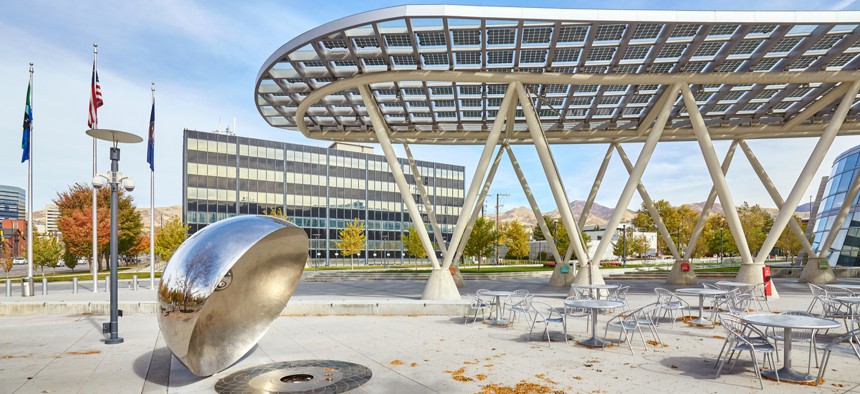Connecting state and local government leaders
But an architect who designs civic buildings urges a measured response instead of creating a “ballistic cocoon.”
Growing up in California, James L. McClaren had no desire to become a policeman, like his father. Instead, at the age of 5, on a trip to San Francisco, he became enchanted with the power of architecture, the ability to blur the distinction between the indoors and outdoors.
But in 1983, after three years as a practicing architect, he was tasked with designing a police building in Anchorage. He hasn’t looked back since. He designs civic, police and other public buildings. The firm he founded in 1994, McClaren Wilson & Lawrie, now has completed 265 projects in 48 states and three Canadian provinces.
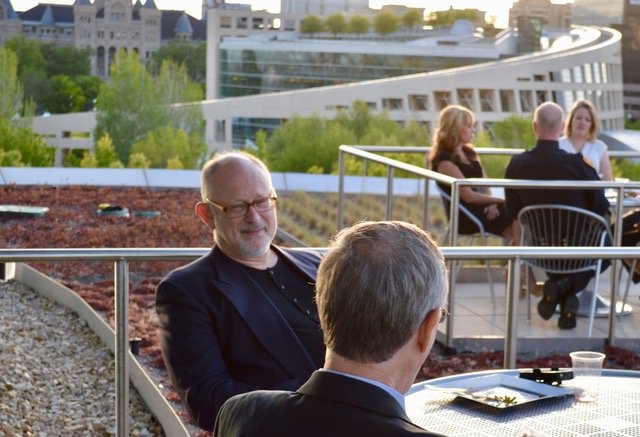
In designing public buildings, McClaren and his associates strive always to keep public buildings public but with the goal of preventing violence to those who work and visit. That’s become a tougher challenge in the last four or five years as public buildings have been the scenes of violent acts and tragedies, including the 2015 mass shooting at the Inland Regional Center in San Bernardino County, California, where 14 people at a Department of Public Health employee gathering were killed.
“In communities of every size and demographic profile we have received reports of increasingly agitated customer service events, unruly planning meetings, weapons brandished in municipal courts and at service counters,” McClaren said in an interview. “While the customer services staff in most public agencies are very client-centric, they now frequently express concerns about their personal safety in the buildings they work in and walking to and from their cars.”
Mass shootings always spiked anxiety, he said. Now, that unease is seemingly continuous.
“We used to see peaks and valleys. After 9/11 we were under siege by clients, but five years later there was nowhere near the interest. Now there seems to be something happening on an almost daily or weekly basis. We get calls immediately after any major event. The anxiety levels seem to be much more constant,” McClaren said.
“The perception is that things are getting worse and no one is really taking any meaningful steps to do anything. Many of my civic clients cite increasing incidents where knives are brandished at service windows. Many also tell me it is common to find themselves transacting business with customers that arrive wearing holstered guns.”
What’s odd about these anecdotal reports of rising crime in public places is the long-term decline in crime in the United States. “Crime across the United States has steadily declined over the last two decades,” said the Brennan Center for Justice in a 2015 report titled "What Caused the Crime Decline?” The report said the crime rate then was about half of that it was at its height in 1991. “Violent crime has fallen by 51 percent since 1991, and property crime by 43 percent.”
McClaren is unsure of the cause for the uptick in violence at public buildings. “We are desperate for statistics,” he said. He points out that Congress in 1996, in move strongly pushed by the National Rifle Association, cut funding for any research by the U.S. Centers for Disease Control and Prevention that might be used to “advocate or promote gun control.”
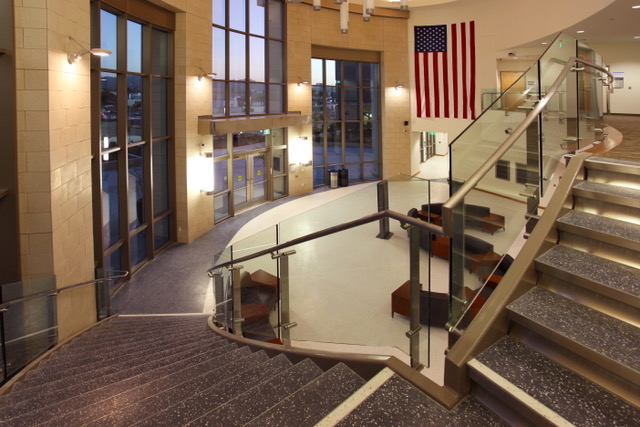
Guns are only one of the many weapons that McClaren and his associates think about in their work. They have designed police headquarters for Seattle, Dallas and San Francisco along with the two largest forensic science labs in North America, the FBI Lab in Quantico, Virginia, and the Forensic Science and Coroner’s Centre for the Province of Ontario in Toronto.
They’ve also designed public buildings in Colorado ski towns, most recently in Aspen. The company’s projects are most often in cities of populations from 24,000 to 80,000.
When new violence occurs, many community officials want to create what McClaren calls a “ballistic cocoon.” He counsels measured responses.
“When done without care, the installations come off like ‘check-cashing’ facilities with ballistic glazing and overt barriers that actually make the whole new fortified service delivery environment more hostile,” he said.
Ballistic-proof glass and other barriers can be justified in some cases, he said. But other, less obtrusive measures might suffice. For example, wider counters allow both sides to lean over and talk out things, but they’re too wide to easily climb over or reach out and grab somebody. “Those the types of steps we take,” McClaren said.
“We work hard in the creation of normalizing and calming environments employing finishes that reduce noise. We adjust light levels to be uniform, but never harsh. We strive for designs that create respectful, personal space; where visitors are seated or queue.”
His company may also equip transaction counters with sliding rather than fixed or staggered ballistic glazing panels.
“We want to give staff the ability to exercise their judgement when they want to leave service counters open or close them if a risk is perceived,” he explains. “We frequently add remotely activated, self-closing doors to secure office suites when/if duress alarms are signaled. In city council chambers we look at the means of egress, while considering areas of refuge.”
Some of these designs require more space, boosting costs. McClaren contends the cost delivers greater security.
“We believe that creating constrained spaces can trigger a ‘fight-or-flight’ response. An example: We tend to use restrooms designs with walk-around entrances to eliminate doors. This allows sounds of distress to reach spaces where they may be readily heard and initiate a response,” he said.
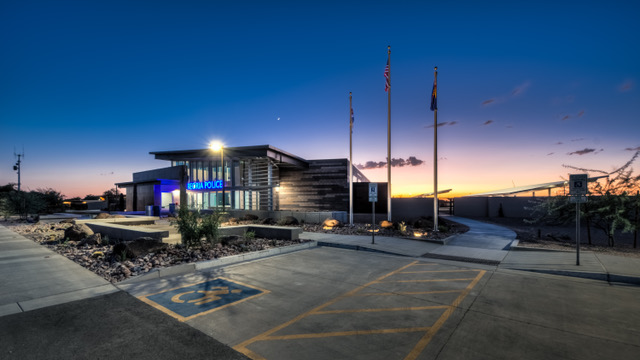
If 9/11 made many people fearful of terrorists, the threats McClaren’s company helps community address are home-grown.
“You find disgruntled people everywhere, he says. “It’s somebody in the community that is either unbalanced or has a frustration level that they’re willing to take on somebody else.”
Much thought also goes into building exteriors. With the potential for explosives in mind, public parking immediately adjacent to buildings is discouraged. A greater concern is the potential for what McClaren calls “ramming,” or somebody trying to drive a truck or some other vehicle into a building.
High-powered guns have also become a concern. Again, McClaren’s architects see need for balance. Masonry, stone and durable materials are used in places that may be at risk. Windows, however, are placed with care, too high for a sharpshooter on the exterior to see the occupants inside.
“We are not trying to create fortresses. We are not trying to remove windows. We believe you need natural light to be healthy. We are just real care about where to put them.”
What is encouraged is openness. “We believe that active and open spaces are safer than spaces that are enclosed and private. We stress spaces that eliminate places of possible concealment; the more eyes that view a space, the safer it is,” he said.
Conifer trees are used very carefully in landscaping, because the branches are much lower, offering places to hide. Mixed-use developments are welcomed. “The safest places are those with eyes on the streets,” McClaren said.
An Israeli architect pointed this out to McClaren’s team. “He said the safest places were not the fortresses. The safest places were those with the most openness, where you could see things and had a lot of activity, the community spaces.”
Mass shootings are nothing particularly new in the United States. In 1966, Charles Whitman, a former Marine sharpshooter, stabbed his mother and wife then shot and killed 14 and injured 31 other from a perch at the University of Texas at Austin. In 1989, five school children in Stockton, California, were shot and killed and 32 wounded before the gunman killed himself, the first time an automatic weapon was used. Then came the touchstone of Columbine High School in 1999, this time in a relatively affluent suburban school district near Denver.
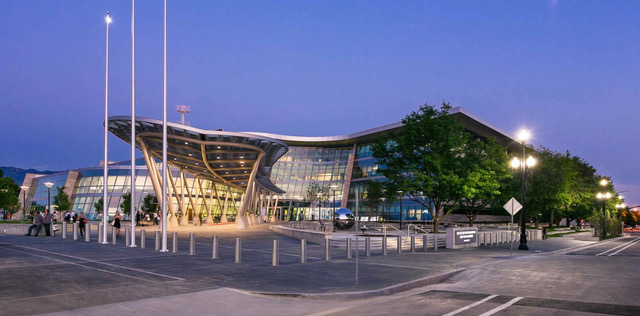
The fatal police-involved shooting of Michael Brown in Ferguson, Missouri, was a threshold, he said. Afterward, some police agencies tried harder to be part of their communities, while others pushed back.
McClaren observes distinction between most U.S. policy agencies and those in Canada. Canadians commonly use the phrase “police service,” and personnel are recruited from college graduates. Military veterans are commonly given preference for “police forces” in the United States. “We have a much more para-militarized structure in our country,” he says. He also points out that his own father was a veteran of World War II.
Sometimes McClaren and his team hear surprising things from community groups. For example, planners on one university campus wanted to put the police building in an out-of-the-way spot, reserving prime locations for a future lab or other building. Students who testified said that in time of need, they wanted a police building in a prominent location, where officers could be found. Some police headquarters have community rooms. In one location, Islamic groups wanted to meet there, because they felt more secure.
Police tend toward to see heightened risk in the world and architects a have a tendency downplay risks. For architects specializing in security, the challenge is to assess the vulnerabilities, deal with them, but not get frozen by fear of threats. If he succeeds, McLaren creates spaces where people are “encouraged to respect each other and people can be treated with respect on both sides of the counter.”
“From a philosophical standpoint, the most important point in our minds is creating environments where are inclusive and open and where there a no places to hide.”
Allen Best is a writer based in Denver.

NEXT STORY: As Trump Threatens NAFTA (Again), States With the Most on the Line Ahead of Trade Talks
